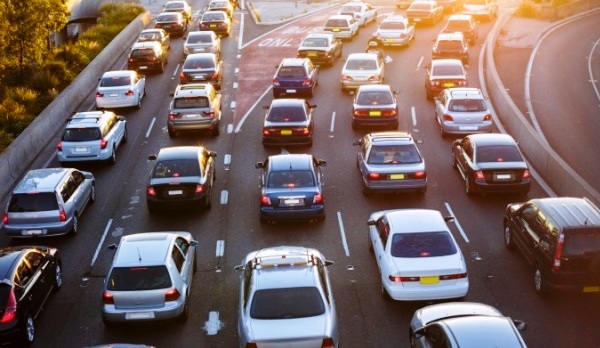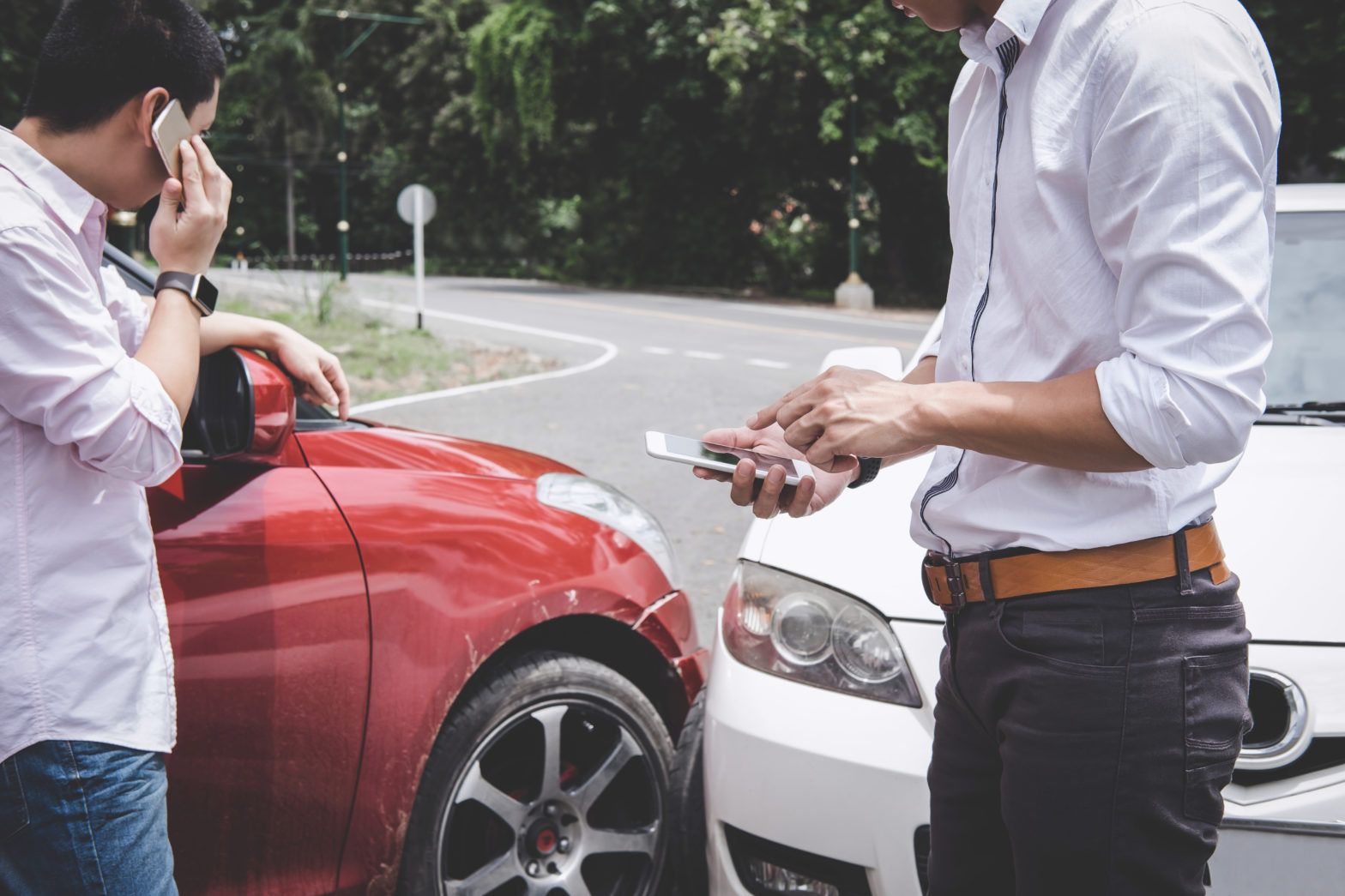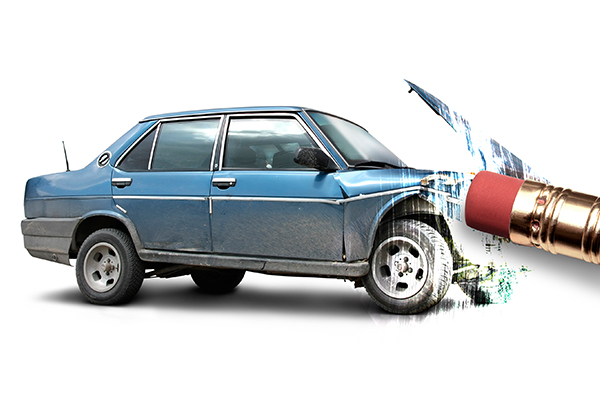The holiday season is a wonderful time to hit the road for a visit with family and friends. But it often means long drives in heavy traffic. To help you stay safe (and sane) on the road to your destination, here’s a list of defensive driving tips to prepare you for the drive.
Planning: The First Line of Defense
According to the National Safety Council (NSC), defensive driving means taking reasonable action to prevent a collision. But defensive driving starts before you even get on the road. Checking weather and road conditions in advance helps you plan a route and know what to expect along the way. It’s also important to pack the car with basic supplies. A first aid kit, flares, snacks and blankets ensure you’re ready for emergencies on long drives.
Traffic Watch
The holiday season is not only one of the busiest travel times, but this year’s low gas prices mean many people will probably choose to drive. And more cars on the road means a higher chance of fatal crashes, so it’s extra important to stay alert this year and learn to spot and avoid hazards using these NSC-approved tips.
– Defensive driving instructors recommend checking your mirrors every three to five seconds and continuously scanning ahead for possible dangers.
– Always give the right of way to fellow motorists, but be prepared to react to unexpected lane changes and turns.
– During heavy traffic, keep a safe distance from other vehicles and give yourself ample response time by slowing your speed.
– Look for signs of impaired, distracted and even aggressive driving and develop techniques like deep breathing to keep calm under pressure.
Collision-Proof Your Drive
 The NSC has identified six unsafe driving behaviors that most often lead to collisions. By understanding each infraction and learning how to avoid them, holiday travelers can develop safer driving habits and collision avoidance techniques.
The NSC has identified six unsafe driving behaviors that most often lead to collisions. By understanding each infraction and learning how to avoid them, holiday travelers can develop safer driving habits and collision avoidance techniques.
1) Improper speed. Keep a close eye on both the posted speed limit and weather conditions. Even if you’re obeying the limit, you may need to slow down to drive safely on a wet or icy road.
2) Violating right of way. To make sure you’re yielding properly and following all traffic signals and stop signs, drive at an appropriate speed to give yourself time to react and take a moment to scan intersections before entering them.
3) Driving left of center. Patience and foresight are key to avoiding this unsafe behavior. Slow down and stay behind cyclists or pedestrians until it’s safe to pass them, and watch the road ahead for animals or other obstacles so you can brake or safely steer around them instead of swerving into the other lane.
4) Turning improperly. Always use turn signals to let other drivers, pedestrians and cyclists know where you’re going. (Most traffic laws require you to signal within 100 feet of a turn, but you should check local regulations.)
5) Passing improperly. When passing, be sure to use your turn signals and check your blind spots, as well as in front of and behind your vehicle. You should be able to pass without getting too close to the car ahead or going over the speed limit; if you can’t, it may not be safe to pass.
6) Following too closely. At low speeds, this can lead to irritating fender benders; at high speeds, it can be deadly. Give yourself at least three seconds of distance between your own vehicle and the one ahead. If someone is tailgating you, don’t speed up! Maintain your speed and move over to let him or her pass if and when it is safe to do so.
Did you know? GEICO policyholders who complete defensive driver training could qualify for discounts on their auto insurance, depending on the state they live in. To learn more about defensive driver courses in your state, visit geico.com/ddc.
By Katherine Palbom & Kristen Koch










Reina Garcia says,
Is good to read to refresh your mind with the rules of defensive Driving It stay in your mind.and may help to avoid an accident.
james J. Mulholland says,
Thank you for the Defensive Driving tips. My 36 year career with Bell System Companies included many safety meetings and Defensive Driving classes. I have tried to pass on to my family members all the best advice I could remember. The recent AARP classes we attended were the best yet. I will have been retired 25 years on 5/1/2016 and continue to learn at every opportunity. My wife and I are always together when driving. We avoid rush hours, night driving and long trips. We allow no one to drive our car. We do not drive any vehicle we do not own. By following these simple rules, we pay less than anyone else for the same coverage. Thanks again. Keep those tips coming and keep our rates down.
John B. Darmanin says,
Nothing new; all common sense.
Dan Turner says,
Good courses.
Jasony A. Greene says,
You forgot the most important danger on the highway at all times that causes the most accidents and impedes driving for everyone.: Drive on the right and pass on the left, including interstate highways. That is an equal law to driving the speed limit. So get rid of the bozos who enforce their own personal speed limit (typically less than the posted limit) in the left lane and force everyone to pass in the middle. Driving the speed limit on an American Interstate has always been much more dangerous than driving 125 mph on a German autobahn because in American its always a game of switching lanes with no signal and assuming anyone in the lane you are moving into will get out your way, plus you get so many drivers who have to pass on the right it might as well be in England. I have driven over 2 million noncommercial miles without a single accident, but in America it is always dangerous and I am always on alert. By far the worst of the sixty countries I have driven in, because at least in the other countries the drivers are at least aware of the rules and try not to kill themselves, while in America it is the opposite.
Where is your advice: THE LAW SAYS DRIVE ON THE RIGHT AND PASS ON THE LEFT, NO MATTER WHAT SPEED YOU ARE GOING. IT IS A CRIME IN ALL STATES TO DRIVE ON THE LEFT WITH OPEN OR FASTER LANES ON THE RIGHT, NO MATTER WHAT SPEED YOU ARE GOING.
BTW, even though many, many people complain about tailgating, I have never been tailgated in my life. Maybe the people who get tailgated are left lane hogging slowpokes who engender this very dangerous practice with their illegal left lane driving?
amy kaplan says,
Jasony, I very much agree with you. I don’t understand why people do that left lane thing. It’s very aggravating. Varies from state-to-state though. Here in New Mexico, no one does that. In California, it’s rampant.
Granny Gear says,
To be exact, during crowded road conditions, when most drivers are driving the speed limit or below, some middle aged males on testosterone supplement with a short fuse are trying to filter forward by frequent lane changing and cutting between cars with 2 feet to spare. About one out of every 20 drivers is like this. And of course at night they always have their brights on. The net result is all traffic is slowed down, accidents occur, and the problem drivers only increase their average speed by 1 mph.
Jewell says,
I totally agree with you Granny Gear! I live in Rural Alabama, I’m from Another state, and this is the most dangerous place I’ve ever driven, I sometimes dread driving any place around here, for some reason, the bad drivers are in a big hurry, and speed around me and come very close to takig my bumper right off, I drive in the right lane too. I wish the ones in a hurry to kill or hurt others or themselves would just buy a plane ticket so they won’t be on the roads, and take the course!
George Osborne says,
It is also important to have your vehicle serviced and your tires checked for proper pressure (usually found on the inside of the passenger door) sometimes tire dealers will put more air but they can be acceptable if you bought tires from this tire dealer. Ask whom ever services your vehicle to look for any worn belts,leaks and be sure the brake fluid,power steering fluid, transmission fluid,radiator levels and battery level are all okay. Vehicle should have been driven awhile so fluid levels can be checked properly. Brakes of course should be in excellent working order as the steering links etc. Windshield wipers should be in good working order and if you are traveling toward cold weather to have windshield fluid is one that freeze.
George Osborne says,
I meant to say for windshield fluid one that won’ t freeze.
John Fritsch says,
I think driving during the Holiday Traffic was a real good showing and I will use that same method that you show.
I think everyone should see the Holiday Traffic Example that you put out.
June Van Steyn says,
It never hurts to be a courteous driver.
Earl Nakahara says,
Great suggestions. I’ve been reading these kinds of things for the 52 years I’ve been driving. Unfortunately, most of the drivers–and I mean most–regularly ignore all of the suggestions. Whether young or old, white collar or blue collar, male or female, most drivers just drive in whatever way suits their fancy. I try to drive in a safe and courteous manner and told my kids to do so too regardless of what everybody else is doing but not be a knucklehead about it. I don’t have any societal values to push on others. I just want to get to my destination. One indicator of the drivers today is the number of dings I get on my vehicles regardless of how carefully I park them.
Betty says,
I don’t think enough is said about not using CRUISE CONTROL when the road is wet or it is raining. I don’t use it, but know people who do not matter what the weather.
Eunice pena says,
That class is very important and you learn a lot
Rachel Smedley says,
I was informed that if I completed your Defensive Driving test I could lower my insurance costs ?
How do I access the test to try to complete it.
Rachel
Betty Lee Smith says,
I appreciate Geico sending out these driving tips. I enjoy their articles and quizes. I’m a loyal Geico policy holder.
robert suciu says,
It was very helpful, thank you Robert S.
Zach Thalman says,
I think people drive more aggressively than defensively. Just drive defensively. Make sure your vehicle is safe and that you also are safe. Driving any other way is going to be hazardous for you or people around you.
Gerry White says,
You should always slow down in wet weather and a good reason for this is you don’t know the road if you are on a trip and you have never driven on a particular hazard prone part of the road. You may be driving in an area that is a known hydroplane location. You need to always be aware of other drivers and driving conditions